Abstract
All chemicals that are not normal constituents of human milk should be considered undesirable contaminants. In the present review, the following substances detected in human milk are considered: persistent organochlorine pesticides; polychlorinated biphenyls (PCB); polychlorinated dibenzodioxins (PCDD) and dibenzofurans (PCDF); polybrominated compounds; polycyclic aromatic hydrocarbons (PAH); trace elements; mycotoxins; nitrate, nitrite, nitrosamines; nicotine, caffeine, ethanol; and drugs. The levels of most of these substances found in human milk were within a range that would not constitute health hazards for breast-fed infants. For many of these, there is a comfortable safety margin. This applies also to organochlorine pesticides and PCB, particularly since, as a result of their discontinued use, the levels of these compounds have clearly declined in recent years. On the other hand, the aflatoxin burden mediated through breast milk, at least in certain tropical countries, appears to pose a definite health hazard. Detailed reference are given on the contamination of human milk with PCDD/PCDF which has to be considered as a matter of concern from the viewpoint of preventive public health. Although the low PCDD/PCDF levels found in the adipose tissue of infants indicate that there is no appreciable health risk emanating from these substances for breast-fed infants, appropriate measures to reduce the current rate of their emission into the environment have to be taken.
Full text
PDF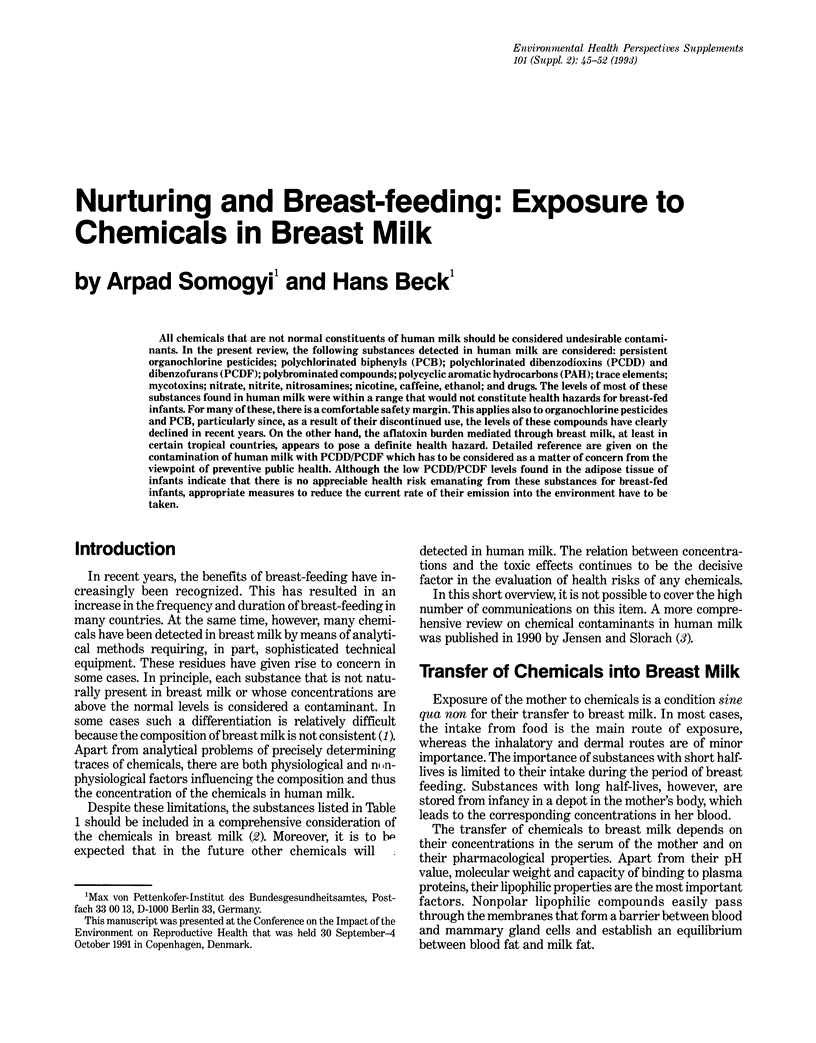
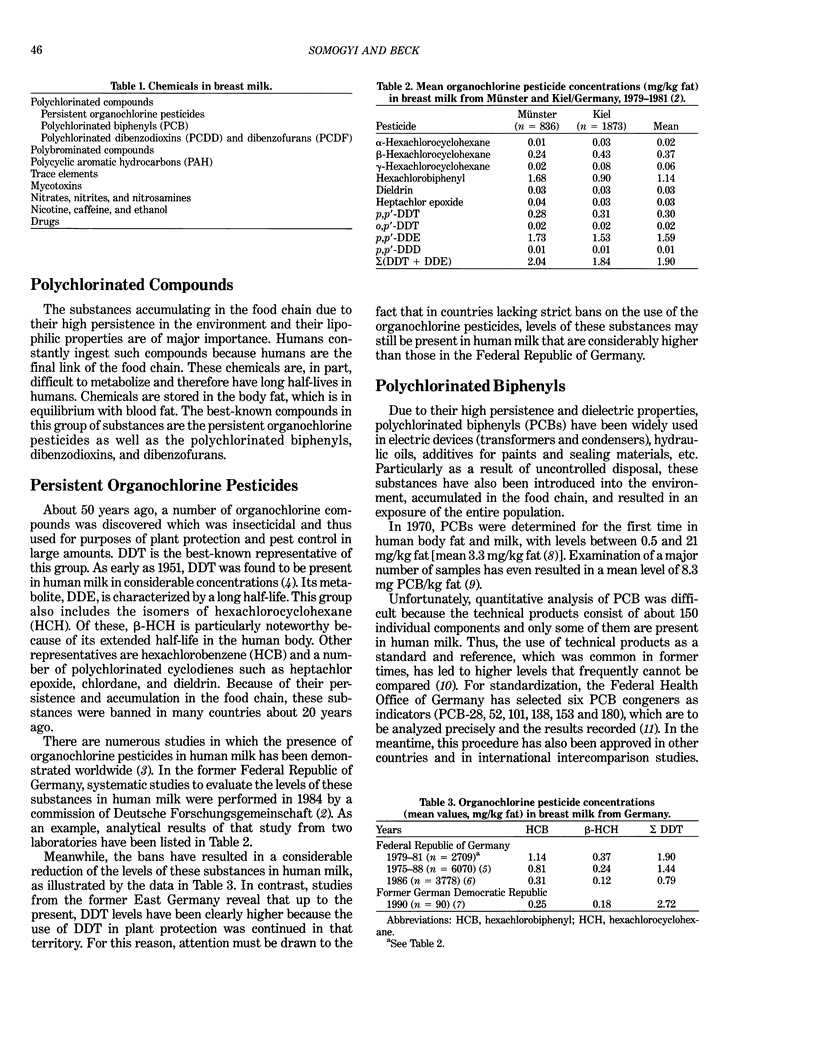
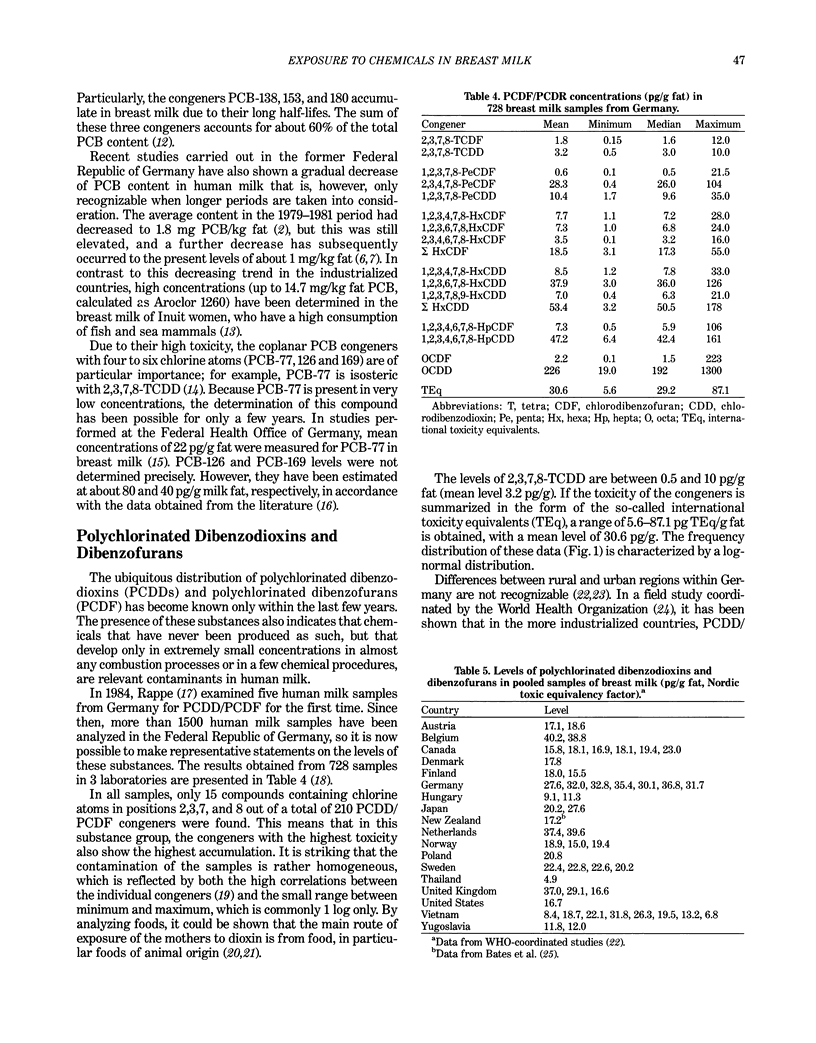
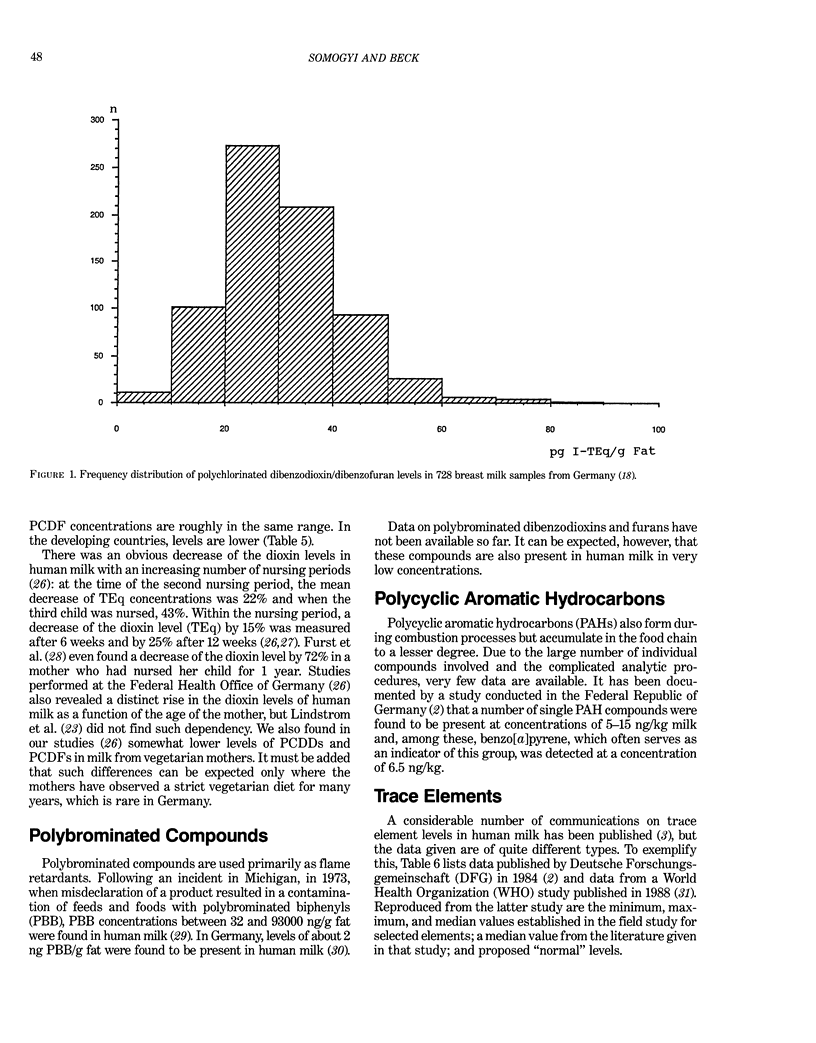
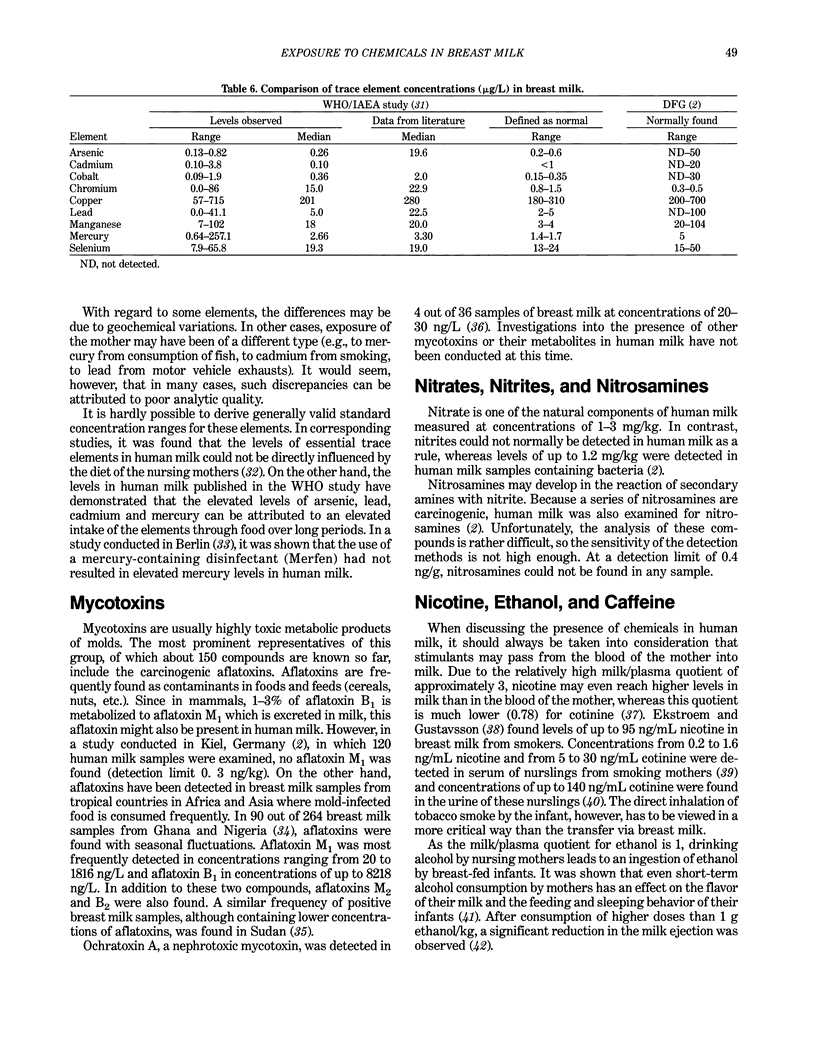
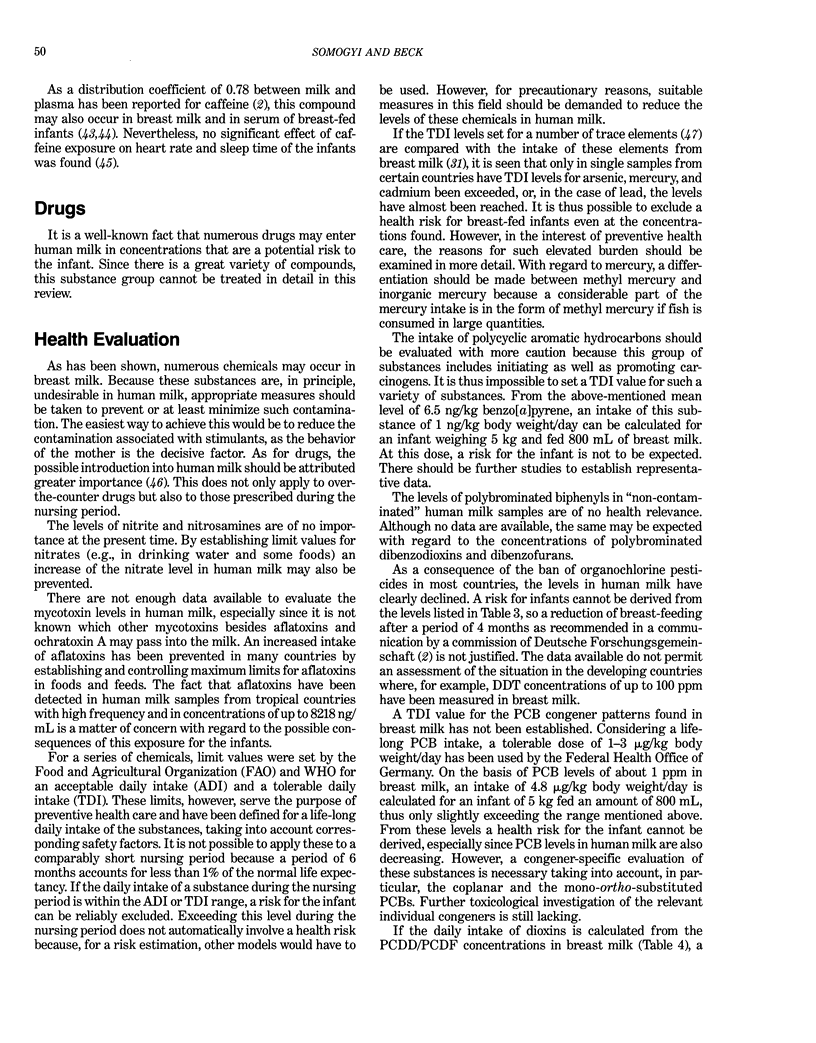
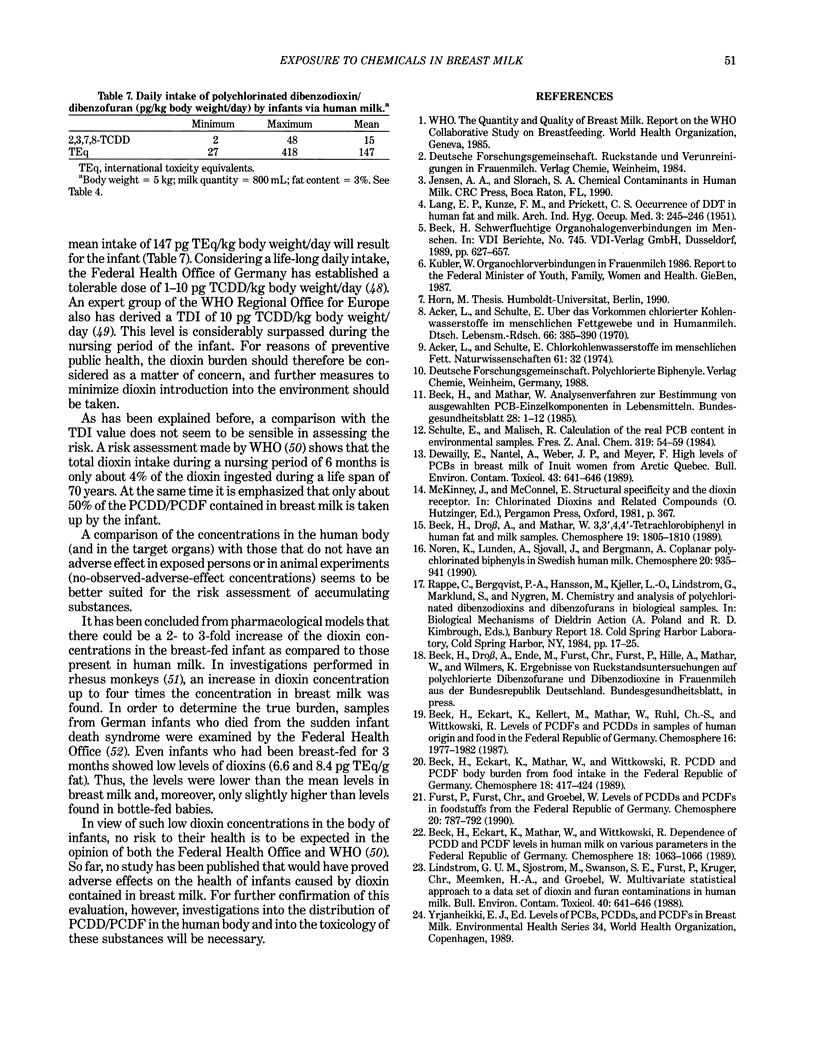
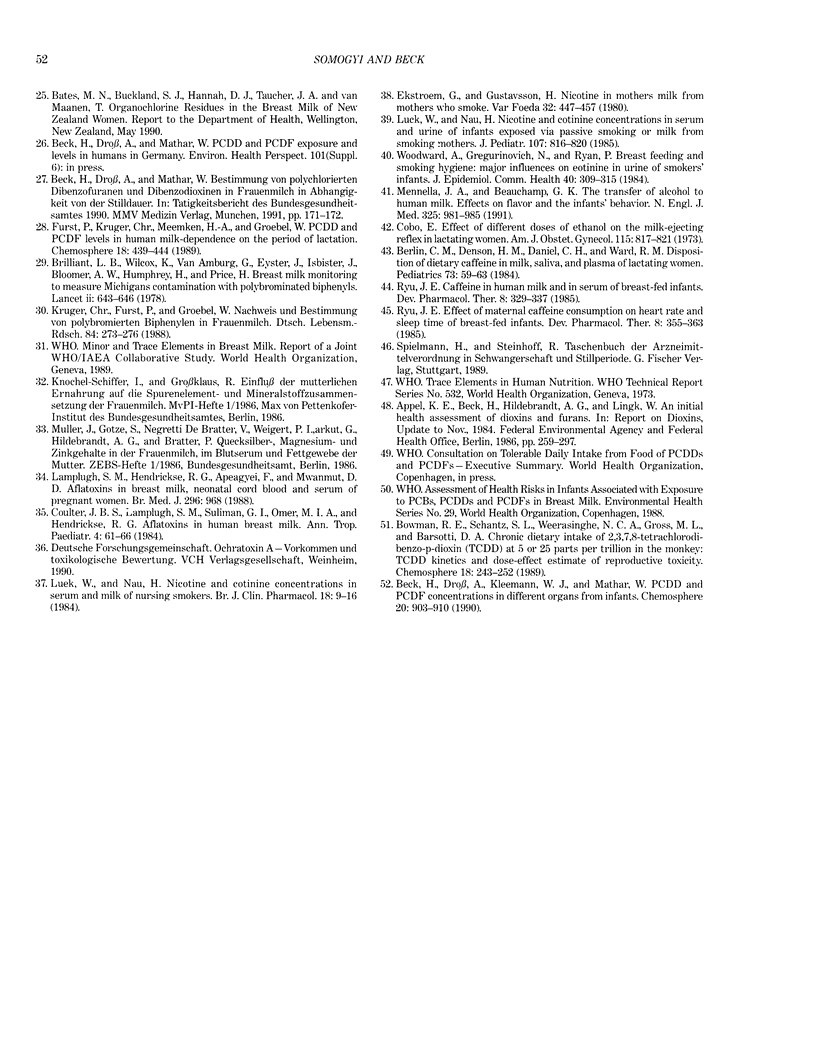
Selected References
These references are in PubMed. This may not be the complete list of references from this article.
- Acker L., Schulte E. Chlorkohlenwasserstoffe im menschlichen Fett. Naturwissenschaften. 1974 Jan;61(1):32–32. doi: 10.1007/BF00602893. [DOI] [PubMed] [Google Scholar]
- Berlin C. M., Jr, Denson H. M., Daniel C. H., Ward R. M. Disposition of dietary caffeine in milk, saliva, and plasma of lactating women. Pediatrics. 1984 Jan;73(1):59–63. [PubMed] [Google Scholar]
- Brilliant L. B., Wilcox K., Van Amburg G., Eyster J., Isbister J., Bloomer A. W., Humphrey H., Price H. Breast-milk monitoring to measure Michigan's contamination with polybrominated biphenyls. Lancet. 1978 Sep 23;2(8091):643–646. doi: 10.1016/s0140-6736(78)92758-7. [DOI] [PubMed] [Google Scholar]
- Cobo E. Effect of different doses of ethanol on the milk-ejecting reflex in lactating women. Am J Obstet Gynecol. 1973 Mar 15;115(6):817–821. doi: 10.1016/0002-9378(73)90526-7. [DOI] [PubMed] [Google Scholar]
- Coulter J. B., Lamplugh S. M., Suliman G. I., Omer M. I., Hendrickse R. G. Aflatoxins in human breast milk. Ann Trop Paediatr. 1984 Jun;4(2):61–66. doi: 10.1080/02724936.1984.11748311. [DOI] [PubMed] [Google Scholar]
- Dewailly E., Nantel A., Weber J. P., Meyer F. High levels of PCBs in breast milk of Inuit women from arctic Quebec. Bull Environ Contam Toxicol. 1989 Nov;43(5):641–646. doi: 10.1007/BF01701981. [DOI] [PubMed] [Google Scholar]
- Lamplugh S. M., Hendrickse R. G., Apeagyei F., Mwanmut D. D. Aflatoxins in breast milk, neonatal cord blood, and serum of pregnant women. Br Med J (Clin Res Ed) 1988 Apr 2;296(6627):968–968. doi: 10.1136/bmj.296.6627.968. [DOI] [PMC free article] [PubMed] [Google Scholar]
- Lindström G. U., Sjöström M., Swanson S. E., Fürst P., Krüger C., Meemken H. A., Groebel W. Multivariate statistical approach to a data set of dioxin and furan contaminations in human milk. Bull Environ Contam Toxicol. 1988 May;40(5):641–646. doi: 10.1007/BF01697508. [DOI] [PubMed] [Google Scholar]
- Luck W., Nau H. Nicotine and cotinine concentrations in serum and urine of infants exposed via passive smoking or milk from smoking mothers. J Pediatr. 1985 Nov;107(5):816–820. doi: 10.1016/s0022-3476(85)80427-3. [DOI] [PubMed] [Google Scholar]
- Mennella J. A., Beauchamp G. K. The transfer of alcohol to human milk. Effects on flavor and the infant's behavior. N Engl J Med. 1991 Oct 3;325(14):981–985. doi: 10.1056/NEJM199110033251401. [DOI] [PubMed] [Google Scholar]
- Ryu J. E. Caffeine in human milk and in serum of breast-fed infants. Dev Pharmacol Ther. 1985;8(6):329–337. doi: 10.1159/000457057. [DOI] [PubMed] [Google Scholar]
- Ryu J. E. Effect of maternal caffeine consumption on heart rate and sleep time of breast-fed infants. Dev Pharmacol Ther. 1985;8(6):355–363. doi: 10.1159/000457060. [DOI] [PubMed] [Google Scholar]
- Woodward A., Grgurinovich N., Ryan P. Breast feeding and smoking hygiene: major influences on cotinine in urine of smokers' infants. J Epidemiol Community Health. 1986 Dec;40(4):309–315. doi: 10.1136/jech.40.4.309. [DOI] [PMC free article] [PubMed] [Google Scholar]
- von der Ahe D., Pearson D., Nagamine Y. Macromolecular interaction on a cAMP responsive region in the urokinase-type plasminogen activator gene: a role of protein phosphorylation. Nucleic Acids Res. 1990 Apr 25;18(8):1991–1999. doi: 10.1093/nar/18.8.1991. [DOI] [PMC free article] [PubMed] [Google Scholar]


